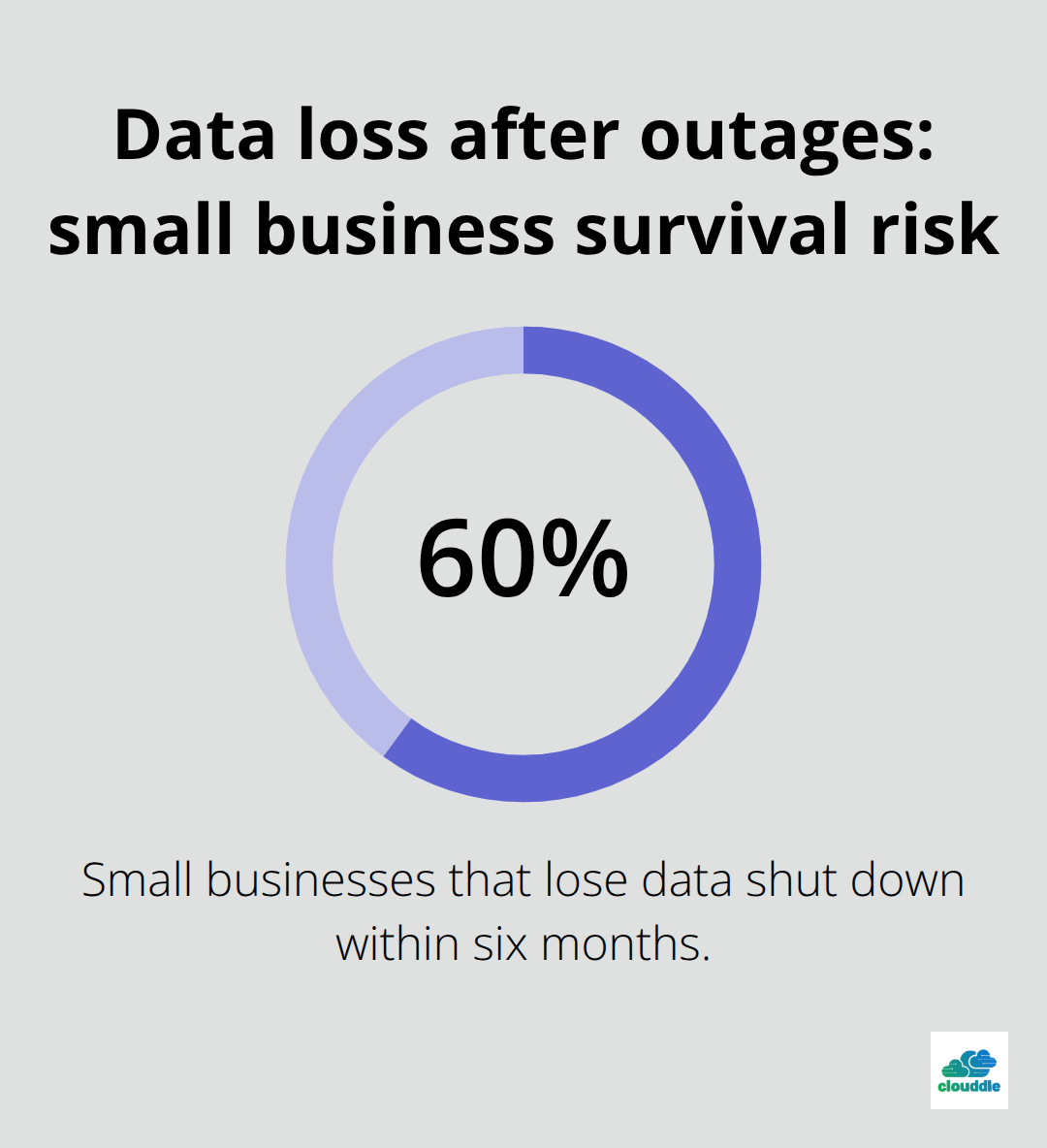Choosing the right dedicated IT solutions can make or break your business operations. Poor technology decisions cost companies an average of $15 million annually in downtime and lost productivity.
We at Clouddle see businesses struggle with this choice daily. The key lies in matching your specific needs with the right provider’s capabilities.
Assessing Your Business IT Needs
What IT Assets Do You Actually Have
Your technology audit starts with a complete inventory of every device, software license, and system that runs in your business. Most companies operate with outdated spreadsheets or no documentation at all. According to asset management research, organizations waste significant resources on unused licenses and duplicate applications.
Start by cataloging every computer, server, mobile device, printer, and network component. Document software versions, license expiration dates, and hardware specifications. This process typically takes 2-3 weeks for businesses with 50+ employees, but it prevents costly surprises during IT transitions.
Performance Bottlenecks That Cost Money
Network slowdowns, application crashes, and system outages directly impact your bottom line. Research shows that network downtime costs organizations significant amounts per hour, with some estimates reaching $300,000 hourly for large enterprises.
Track your current response times for critical applications, measure internet speeds throughout the day, and document how often employees restart computers or applications. Monitor your backup systems monthly – 60% of small businesses that lose data shut down within six months (according to the National Archives and Records Administration).

Create a priority matrix that ranks which systems are most important to daily operations versus those that can tolerate brief interruptions.
Budget Reality Check
IT spending should represent 6-10% of total revenue for most service businesses, yet many companies either drastically underspend or waste money on unnecessary features. Calculate your current annual technology costs including hardware, software licenses, internet service, phone systems, and any existing support contracts.
Factor in hidden costs like employee time spent on technical issues – the average knowledge worker loses 22 minutes daily to IT problems according to Rescue Time data. Set aside 15-20% of your IT budget for emergency repairs and unexpected upgrades, because hardware failures always happen at the worst possible moments.
Once you understand your current situation and budget constraints, you can identify which features matter most in your next IT solution.
Key Features to Look for in Dedicated IT Solutions
24/7 Monitoring That Prevents Problems
Round-the-clock monitoring helps prevent system failures through proactive management approaches, yet many businesses still accept reactive support that only responds after problems occur. The best IT solutions monitor your network traffic, server performance, and security threats continuously. They send alerts before employees notice slowdowns.
Look for providers that guarantee response times under 15 minutes for critical issues and maintain redundant systems across multiple data centers. Avoid any provider that charges extra for after-hours support. Technology problems don’t respect business hours, and neither should your IT team.
Scalability That Grows With Your Business
Your IT infrastructure must expand without breaking your budget or requiring complete system overhauls. Companies that use cloud-based solutions can scale computing resources up or down within minutes, while traditional on-premise setups require weeks of planning and hardware purchases.
Businesses with scalable IT solutions experience significant growth advantages compared to those locked into rigid systems. Choose solutions that offer pay-as-you-grow pricing models and can add new users or locations without major configuration changes. Test how quickly your potential provider can provision new services during your trial period (if they can’t demonstrate rapid scaling, they can’t support your growth).
Security Features That Actually Protect
Cybersecurity incidents create substantial financial impacts for businesses according to IBM’s research, yet 43% of cyberattacks target small businesses. Your IT solution must include multi-factor authentication, encrypted data transmission, automated patch management, and real-time threat detection.

Compliance requirements vary by industry. Healthcare needs HIPAA compliance, financial services require SOX compliance, and retail businesses must meet PCI DSS standards. Verify that your provider maintains current certifications and can produce compliance reports on demand (skip any provider that treats security as an add-on service rather than a core feature).
Once you understand which features matter most, you need to evaluate different types of providers and their service approaches.
Comparing IT Service Providers and Solutions
Managed IT vs In-House IT Teams
Managed IT services outperform in-house teams for most businesses under 200 employees. Companies that use managed services benefit from improved customer retention, with hybrid providers retaining customers at least 70% of the time compared with 50% for dedicated MSPs. In-house teams require salaries that average $75,000-$120,000 annually plus benefits, training, and equipment costs.

Managed providers spread these expenses across multiple clients and deliver enterprise-level expertise at a fraction of the price. The break-even point typically occurs around 150-200 employees where dedicated staff becomes cost-effective. Small businesses gain access to specialized skills they cannot afford to hire full-time.
Experience Beats Certifications Every Time
Provider track records trump paper credentials in every situation. Ask for client references in your industry and request specific examples of similar problems they solved. A provider with 10 years managing retail networks beats one with fresh certifications but no relevant experience.
Check how long their technicians stay with the company – high turnover indicates poor management and inconsistent service. Verify their response time claims by calling during off-hours and weekends (most providers exaggerate their availability). Microsoft, Cisco, and CompTIA certifications matter, but only when backed by proven results in environments like yours.
Contract Terms That Protect Your Business
Service Level Agreements must specify exact response times with financial penalties for missed targets. Standard contracts promise high uptime but often include exclusions for maintenance windows and third-party outages. Demand monthly performance reports that show actual response times and resolution rates.
Avoid providers that require multi-year commitments or charge cancellation fees that exceed 30 days of service. The best contracts include escalation procedures, regular business reviews, and clear definitions of what constitutes an emergency versus routine request (this prevents disputes over priority levels).
Final Thoughts
Dedicated IT solutions require you to balance current needs with future growth plans. Start with a thorough technology audit, identify performance bottlenecks that drain productivity, and establish realistic budget parameters. Prioritize 24/7 monitoring, scalable infrastructure, and robust security features over flashy add-ons that provide little business value.
Managed IT providers typically deliver better results than in-house teams for businesses under 200 employees. Focus on provider experience in your industry rather than certifications alone. Demand clear service level agreements with financial penalties for missed response times (this prevents disputes over service quality).
Implementation begins with pilot tests of critical systems before full deployment. Train your team on new processes and establish communication protocols with your provider. Professional dedicated IT solutions reduce downtime costs, improve employee productivity, and protect against cyber threats that could devastate your business.


